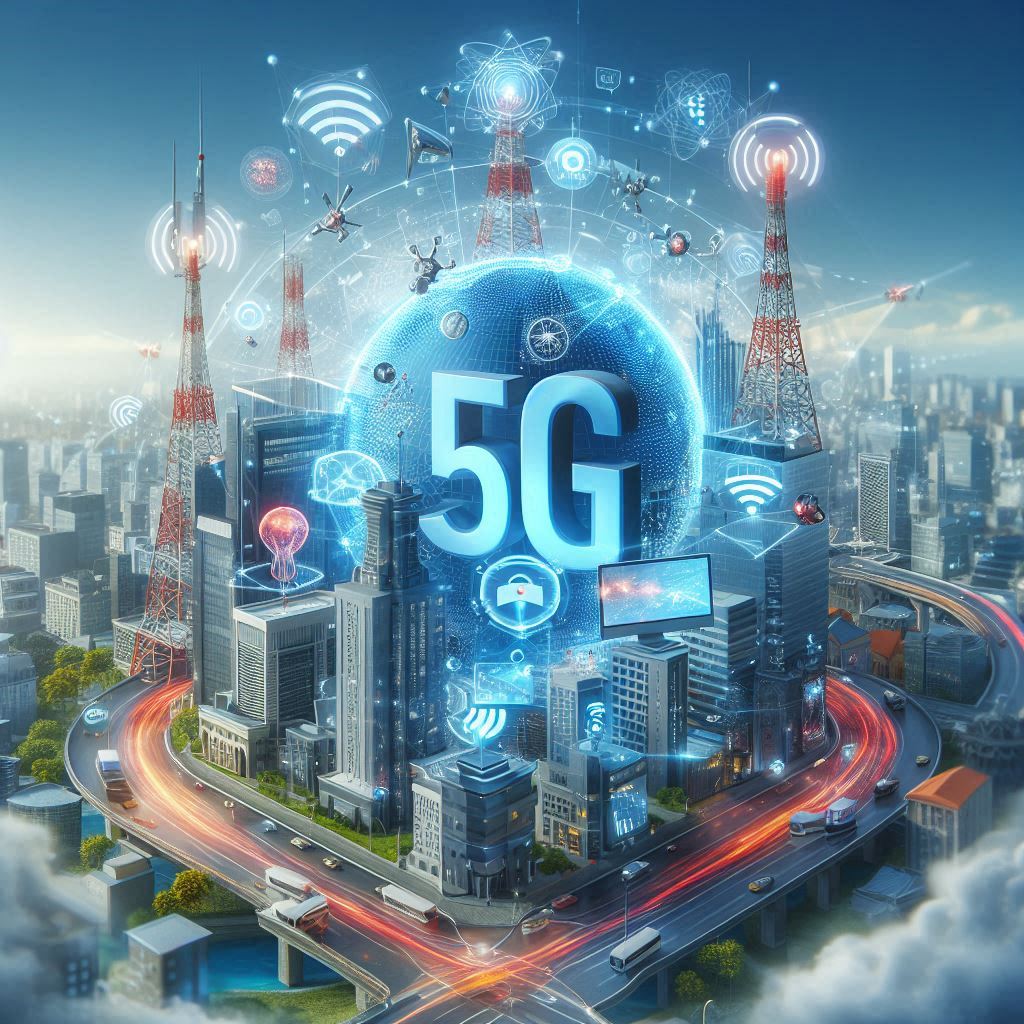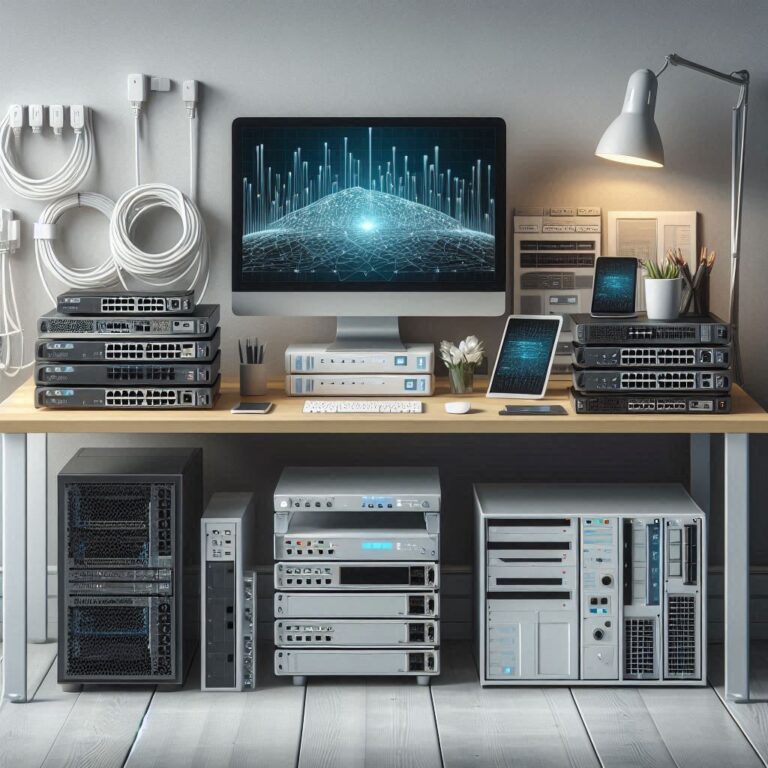5G and Its Impact on Networking Equipment for Businesses

The advent of 5G technology marks a significant leap forward in wireless communication, promising unprecedented speed, lower latency, and enhanced connectivity. As businesses increasingly rely on digital platforms, the implications of 5G extend far beyond smartphones and mobile devices. This next-generation technology is set to revolutionize the way businesses operate, particularly concerning their networking equipment and infrastructure. This article explores the transformative impact of 5G on networking equipment for businesses, the benefits it offers, and the considerations companies must address as they transition to this new era of connectivity.
Understanding 5G Technology
5G, or fifth-generation wireless technology, is designed to deliver higher speeds, increased capacity, and improved performance compared to its predecessor, 4G. While 4G networks have significantly enhanced mobile internet connectivity, 5G takes it a step further by introducing advanced features such as:
- Ultra-Fast Speeds: 5G networks can theoretically achieve speeds of up to 10 Gbps, enabling rapid data transfer and seamless streaming of high-definition content.
- Low Latency: 5G reduces latency to as low as 1 millisecond, allowing real-time communication and interaction, which is crucial for applications like remote surgery and autonomous vehicles.
- Massive Device Connectivity: 5G can support up to 1 million devices per square kilometer, paving the way for the Internet of Things (IoT) and enabling businesses to connect a vast array of devices simultaneously.
- Enhanced Reliability: The reliability of 5G networks ensures stable connections, making them ideal for mission-critical applications where downtime is not an option.
These features make 5G a game-changer for businesses across various sectors, including manufacturing, healthcare, logistics, and retail.
The Impact of 5G on Networking Equipment
As businesses look to harness the benefits of 5G, the impact on networking equipment becomes evident. Here are some key areas where 5G will influence networking infrastructure:
1. Upgrading Existing Equipment
To leverage 5G technology, businesses will need to upgrade their existing networking equipment. Traditional routers, switches, and access points may not support the advanced features of 5G. Companies must invest in new hardware designed for 5G capabilities, such as:
- 5G Routers: These routers are specifically engineered to connect to 5G networks, enabling businesses to harness the high speeds and low latency offered by this technology.
- Enhanced Access Points: Access points will need to support multiple frequency bands and provide seamless connectivity for a larger number of devices.
- Network Infrastructure Upgrades: Businesses may require upgraded cabling and infrastructure to support the increased data throughput of 5G.
The transition to 5G will necessitate a careful assessment of existing equipment and strategic investment in new technology.
2. Embracing Edge Computing
5G’s low latency and high-speed capabilities will drive the adoption of edge computing. Instead of processing data in centralized data centers, businesses can process data closer to the source—at the “edge” of the network. This shift enables:
- Faster Data Processing: By processing data locally, businesses can achieve real-time insights and reduce the time required for data transmission to centralized servers.
- Enhanced IoT Integration: Edge computing is crucial for IoT devices, allowing businesses to collect and analyze data from devices in real time, enhancing operational efficiency.
- Improved Application Performance: Applications that rely on real-time data processing, such as augmented reality (AR) and virtual reality (VR), will benefit significantly from the low latency of 5G combined with edge computing.
As businesses adopt edge computing strategies, they will need to invest in equipment that supports distributed computing models, including edge servers and optimized networking infrastructure.
3. Revolutionizing Connectivity for Remote Locations
5G technology will enhance connectivity for businesses operating in remote or underserved areas. Traditional wired connections may not be feasible in these locations, but 5G offers a viable solution. The impact includes:
- Bridging the Digital Divide: 5G can provide high-speed internet access to businesses in rural or remote areas, enabling them to compete in the digital economy.
- Supporting Remote Work: With 5G connectivity, employees can work remotely with high-speed internet access, improving productivity and collaboration.
- IoT Deployments in Remote Locations: Businesses can deploy IoT devices in remote areas for applications such as agriculture, environmental monitoring, and logistics, benefiting from the reliable connectivity that 5G offers.
As a result, companies operating in diverse geographical areas will be able to expand their operations and services.
4. Enhanced Security and Network Management
5G technology introduces new security features that can enhance the protection of business networks. Some benefits include:
- Network Slicing: 5G allows for network slicing, enabling businesses to create virtual networks tailored to specific applications or services. This segregation improves security by isolating sensitive data and applications from the broader network.
- Improved Encryption: 5G networks employ advanced encryption methods to secure data transmission, making it more challenging for cybercriminals to intercept sensitive information.
- Automated Network Management: AI and machine learning integrated into 5G networks facilitate automated network management, allowing businesses to monitor and respond to security threats in real-time.
By adopting 5G technology, businesses can enhance their security posture and better manage their networking infrastructure.
5. Transforming Business Models and Services
5G will enable businesses to develop new products, services, and business models. Some key transformations include:
- Enhanced Customer Experiences: Businesses can offer new customer experiences, such as immersive AR and VR applications, powered by 5G’s low latency and high bandwidth.
- Smart Cities and Infrastructure: Businesses involved in urban development can leverage 5G to support smart city initiatives, including intelligent transportation systems, smart grids, and connected public services.
- Remote Monitoring and Maintenance: Industries such as manufacturing and healthcare can use 5G for remote monitoring of equipment, enabling predictive maintenance and reducing downtime.
- Innovation in Healthcare: 5G will facilitate telemedicine services, remote surgeries, and real-time health monitoring, transforming the healthcare landscape.
As businesses explore these opportunities, they will need to adapt their networking equipment and strategies to support new services and revenue streams.
Challenges and Considerations for Businesses
While the benefits of 5G are substantial, businesses must also consider challenges associated with its adoption:
- Cost of Transition: Upgrading networking equipment and infrastructure to support 5G can be a significant investment. Businesses must evaluate their budget and prioritize upgrades accordingly.
- Integration with Legacy Systems: Many businesses still rely on legacy systems that may not be compatible with 5G technology. Ensuring seamless integration will be crucial for maximizing the benefits of 5G.
- Data Privacy and Security: As businesses expand their use of connected devices and IoT applications, ensuring data privacy and security will become increasingly important. Businesses must implement robust security measures to protect sensitive information.
- Regulatory Considerations: Different regions may have varying regulations regarding the deployment and use of 5G technology. Businesses must stay informed about these regulations to ensure compliance.
Conclusion
The rollout of 5G technology is poised to revolutionize how businesses operate, fundamentally changing networking equipment and infrastructure. With its ultra-fast speeds, low latency, and massive device connectivity, 5G presents unparalleled opportunities for businesses to enhance their operations, improve customer experiences, and innovate new products and services.
As companies prepare for the transition to 5G, investing in the right networking equipment and strategies will be essential for harnessing the full potential of this technology. By embracing 5G, businesses can position themselves for success in an increasingly digital and connected world.





